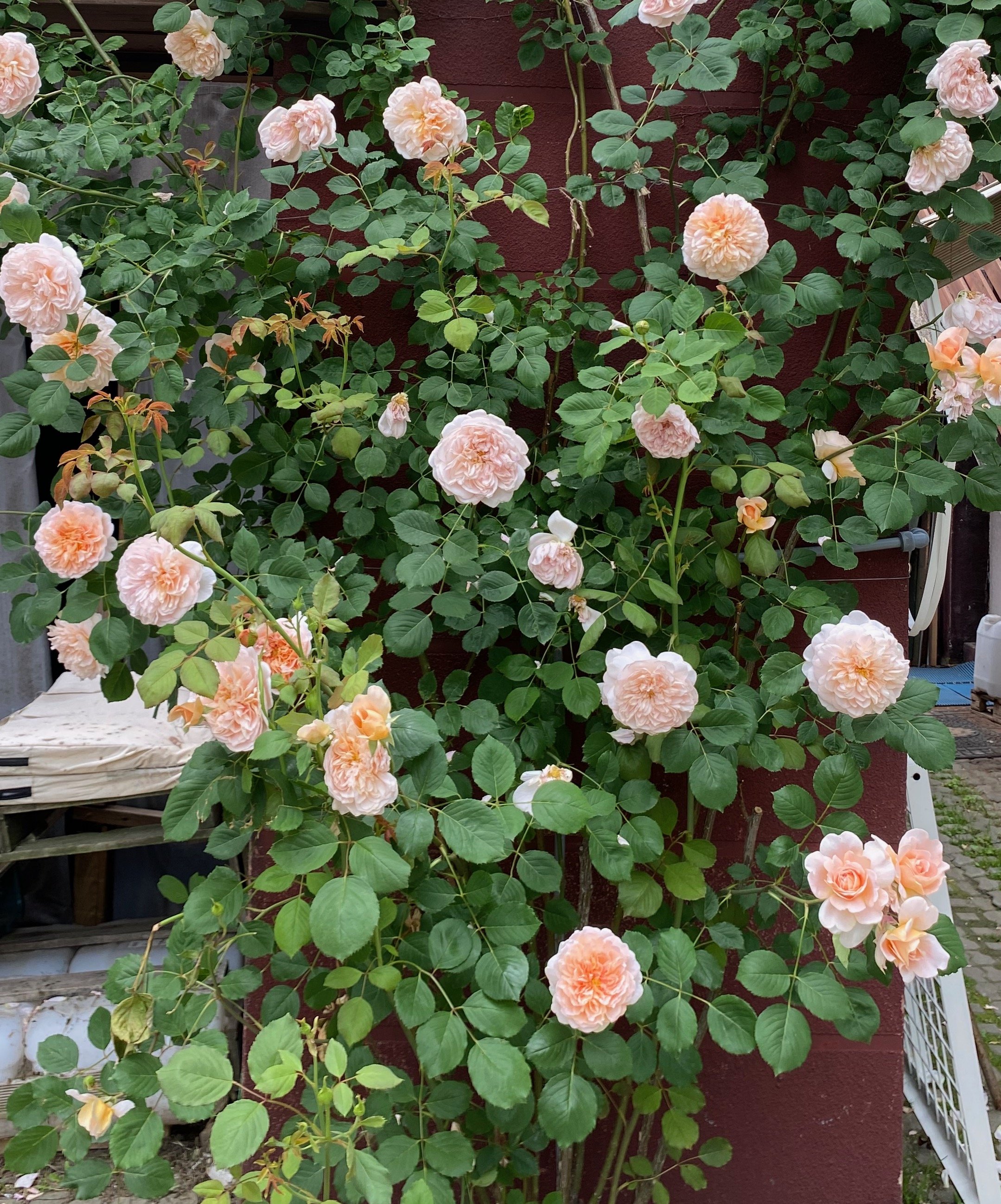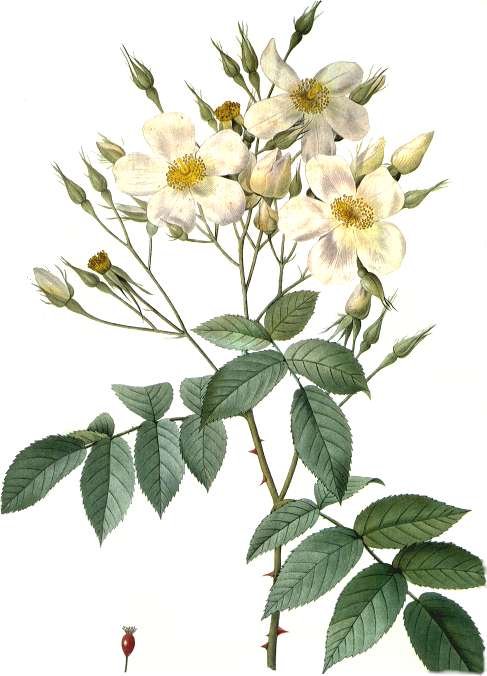Roses, 2024!
As a rose lover and the author of a cultural history of the rose, I can’t pass through the months of May and June without doing a post about roses and sharing with you some photographs of rose blossoms…..And some poetry by John Keats.
As a rose lover and the author of a cultural history of the rose, I can’t pass through the months of May and June without doing a post about roses and sharing with you some photographs of rose blossoms.
A couple of weeks ago I visited the lovely Greenhill Rose Garden, the flagship garden of the Korea Rose Society’s in Gwangju, south-east of Seoul. Here are some pictures upon which to feast your eyes:
This is called ‘Tea Clipper’, an example of one of the so-called ‘English Roses’ created by David Austin, which aim to blend the look and scent of old-style roses with the hardiness and repeat-blooming characteristics of the new. Below a detail. It is delicately perfumed.
This is ‘Leonardo da Vinci’ a variety bred by the prestigious French rose breeders Meilland.
Another David Austin shrub rose: ‘Lichfield Angel’.
The Korea Rose society also created their own rose in 2019 to celebrate the visit of the President of the World Federation of Rose Societies and in memory of the Founding President.
The garden also features some of the classic old roses. Here, above, is ‘Complicata’ a Gallica rose, and an example of a variety created from one of the first species roses to be cultivated in Europe. And below is ‘William Lobb’, the ‘Old Velvet Moss Rose’, first bred in France in 1855. It is deliciously sweetly fragranced. Note how thorny it is!
The garden is the creation of the President of the Korea Rose Society, Kim Wook-Kyun. He also kindly contributed his expertise by overseeing the translation of my book, By Any Other Name. A Cultural History of the Rose into Korean. It was published by Ahn Graphics in 2021:
As I write this post on 9 June the roses in my garden have already bloomed magnificently and their petals have mostly fallen. But thanks to the assiduous attention of modern rose breeders like Meilland and David Austin, the varieties I cultivate should all blossom again before wintertime.
*
And finally, a poem by the English poet John Keats which I didn’t have a chance to present in full in my book, entitled ‘To a Friend who sent me some Roses’:
“As late I rambled in the happy fields,
What time the sky-lark shakes the tremulous dew
From his lush clover covert; - when anew
Adventurous knights take up their dinted shields:
I saw the sweetest flower which nature yields,
A fresh-blown musk-rose; ‘twas the first that threw
Its sweets upon the summer: graceful it grew
As is the wand that queen Tatania wields.
And, as I feasted on its fragrancy,
I thought the garden-rose it far excell’d:
But when, O Wells! thy roses came to me
My sense with their deliciousness was spell’d:
Soft voices had they, that with tender plea
Whisper’d of peace, and truth, and friendliness unquell’d.”
Keats refers to the species rose Rosa moschata, the Musk rose. Prior to 1500, it was the most powerful fragranced rose in Western Europe. The pinkish-white flowers grow in clusters, and their semi-double petals are more closed than single petalled wild roses. The Musk blossoms in late summer and into early autumn, and so it is also known as the ‘Autumn Rose’. Experts believe it originated in Persia, although some sources argue for even farther afield in India or China. It probably came to northern Europe via Spain, and only arrived in England in the early sixteenth century. Here is Redouté’s painting of the Musk rose:
But Keats has surely gotten his roses mixed up. He refers to his Musk as being ‘the first that threw Its sweets upon the summer’, whereas the Musk is actually a late bloomer. In fact, he was evoking some famous lines from Shakespeare’s Midsummer Night’s Dream, a supposition confirmed by the reference to Titania. Shakespeare wrote:
I know a bank where the wild thyme blows,
Where oxlips and the nodding violet grows,
Quite over-canopied with luscious woodbine,
With sweet musk-roses and with eglantine:
There sleeps Titania sometime of the night,
Lull’d in these flowers with dances and delight
This then, is a fine example of what scholars call intertextual allusion. Also an example of art replacing, or at least overlaying, lived experience - and botanical accuracy.
NOTE
For more on roses see: https://www.simonmorley-blog.com/blog-1/roses
The Redouté painting is sourced from: https://en.wikipedia.org/wiki/Rosa_moschata#/media/File:Rosa_moschata.jpg
A Rose a Day No.31
This beautiful rose is called ‘Gertrude Jekyll’. It’s an example of a relatively new family of roses called ‘English Roses’. I have one specimen growing in my garden in France - but this is a photo from the internet.
As their creator David Austin writes:
An English Rose is, or should be, a Shrub Rose. According to variety, it may be considerably larger or even smaller than a Hybrid Tea. But whether large or small, the aim is that it should have a natural, shrubby growth. The flowers themselves are in the various forms of the Old Roses: deep or shallow cup shapes; rosette shapes; semi-double or single, or in any of the unlimited variations between these. They nearly always have a strong fragrance, no less than that of the Old Roses, and their colours often tend towards pastel shades, although there are deep pinks, crimsons, purples and rich yellows.. The aim has been to develop in them a delicacy of appearance that is too often lacking in so many of the roses of our time; to catch something of that unique charm which we associate with Old Roses. Furthermore, English Roses nearly all repeat flower well under suitable conditions.
The breakthrough was a rose called ‘Constance Spry’, released in 1961. As the nursery’s website puts it: ‘The original English Rose. Large, glowing pure rose pink, deeply cupped blooms. Strong myrrh fragrance. Summer flowering only.’ Since 1961, Austin and his team(Austin died in 2018)have produced over 200 ‘English Roses’, and revolutionized how we think about the roses of the present today.
Since the 1980s, there has been a growing trend amongst rose-lovers for ‘new’ roses which still possess some of the endearing characteristics of the old ‘vintage’ garden varieties. The breeders who nurtured and responded to this demand were effectively creating thoroughly historicized roses, and were aware of the rich cultural resonances the rose possesses. They created roses to appeal to people who no longer identified ‘contemporality’ with the rejection of the past. In fact, the new hybrids might be called ‘postmodern’ roses, as they are an indication of a much wider cultural swerve away from an uncompromising cult of the new toward more nuanced relationships with the past. For, in the rush to make the rose the modern rose, the rose of today, much got lost along the way. The aim of the ‘postmodernists’ was to use contemporary scientific knowledge to breed a new race of roses that could unite the best of the old with the best of the new. Like all the various breeders who specialize in producing the ‘heritage’ style roses, Austin make a point of naming their new roses according to the old manner, with great discretion and very good taste , such as these from David Austin: ‘Emily Brontë’, ‘Lady of Shallot’, ‘The Lark Ascending’, and this one, Gertrude Jekyll.
I mentioned the great Edwardian gardener Gertrude Jekyll in my last post. In her book Roses for English Gardens (1902) she opined: ‘Roses are so comparatively modest, they are so accommodating and so little fastidious, that with very moderate preparation and encouragement they can be made to succeed.’
One of the most impressive commercial rose nursery anywhere must be David Austin Roses Ltd. near Wolverhampton in the English Midlands. There is not only a plant centre, tea-room and gift shop, but also six linked rose gardens, with over 700 different varieties or roses. The free sprawling growth of the roses is contained by carefully maintained hedge borders. Each garden has a specific theme, from a formal ‘Victorian Walled Garden’ to an informal ‘Species Garden’. Austin’s own ‘English’ roses are displayed in the “Renaissance Garden.’ David Austin Roses Ltd. provides, one could say, the ‘total’ rose experience. Austin, and the others who have followed his lead, have recognized that the ‘modern’ is only better than the ‘ancient’ if it is proven to be so in recognizable ways.










